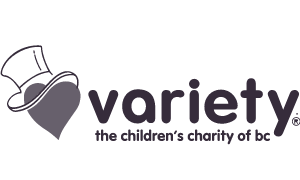Turning Innovative Approaches in Telefundraising Into Real Results: A Look at Three Case Studies
When managing for success in a telefundraising campaign, the three levers of influence are callers, script, and data. How you manage these elements depends on understanding your target audience. Particularly for monthly donors, where they are in their giving journey makes a big difference. Are they new donors or have they been giving for a long time? How have they responded to past solicitations? What is their giving history and past behaviour?
Below, we’ll explore three recent innovative telefundraising campaigns where Stratcom adopted different strategies across these three levers to achieve success.

Acquiring New Donors:
Lottery Players as a Lead Source
New donor acquisition is the beginning of the donor journey and is key to building and maintaining a monthly giving program. Without consistent acquisition, natural donor attrition gradually erodes the size of your donor list. In recent years, as many charities have increasingly invested in face-to-face acquisition of monthly donors, fewer are using direct mail to acquire one-time donors—historically a key source for monthly conversion by phone.
As a result, many charities are now looking for new ways to generate high-quality leads. One innovative approach we began testing with BC SPCA in 2020 has been targeting charity lottery participants for monthly giving.
Each year, BC SPCA runs a Spring Lottery for Animals, attracting thousands of players. Typically, charities don’t target lottery players for monthly giving as conversion rates are usually poor, with the assumption that many players are more interested in the wager than the cause. Here’s where the data comes into play. What if some players were motivated by more than the jackpot? After all, they could have played non-charity lotteries. Stratcom and BC SPCA had a hunch that repeat players, who bought tickets year after year, were more likely to be gamblers while new players were more likely to be mission-driven.
When we segmented out the recent players – those who had play only once or twice – and gave them a monthly giving call, we found that around 8% converted. That’s compared to other Monthly Conversion campaigns that convert at around 3.25%. In that first campaign, we raised around 250 monthly gifts and 150 one-time gifts. Between 2020 and 2024, we have run 10 more Lottery campaigns and raised around 1,250 monthly gifts and 750 one-time gifts, with an estimated 5-year ROI of 200%.
The cherry on top? The acquisition of cost is offset by lottery ticket sales. Looking at the data differently led us to a new acquisition source for BC SPCA.

Building Rapport Quickly:
Text-to-Donate Donors
Variety BC offers another example of acquisition success – this time with a spotlight on the importance of a strong script. They run two annual telethons: Variety Week and Show of Hearts. During these telethons, they promote a Text-to-Donate option via the Mobile Giving Foundation. This allows donors to text a keyword to make a donation, which is charged to their mobile phone bill.
This method is very convenient for the donor, but the dilemma is that it provides minimal information about the donor to the charity – not even the donor’s name. Without a name, building rapport with a donor over the phone becomes much harder.
That’s a problem in telefundraising, where trust is essential – especially with monthly giving. It’s a big ask. You’re asking someone to commit to giving every month, hand over their credit card information over the phone, and agree to let you keep it on file. That requires a lot of trust. And that’s where the caller comes in. The real strength of telefundraising is in the human connection. The caller is the one who builds that trust in the moment. They’re the reason why monthly giving works on the phone. As the age-old adage goes: “people give to people”.
Our solution was to focus on building rapport as quick as possible. We scheduled follow-up calls right after the telethons, when the donation was still fresh in donors’ minds. Callers began by referencing the Text-to-Donate gift and then casually asked for the donor’s name.
Callers were trained to build rapport through inspirational questions designed to engage donors in conversations about their giving motivations. We also emphasized strong objection handling to help callers respond confidently to concerns about monthly giving.
As a result, over four post-telethon campaigns, we converted 10% of Text-to-Donate donors to monthly giving – delivering a 5-year ROI of nearly 900%. This approach proved that, with exceptional callers and a human-centered script, Text-to-Donate donors can be successfully converted to monthly giving.

Reactivating Multi-Rejectors: Smart Upgrades for Long-Term Donors
At the other end of the donor journey lies the Upgrade campaign. Upgrading your monthly donors every year is essential for countering inflation and maintaining the real value of monthly donations. Asking donors to upgrade by around 10% every year means you can keep up with inflation. But especially for mature monthly donor programs, many donors have been approached for an upgrade request for years. And many have said no, sometimes multiple times. These donors, who we call multi-rejectors, perform very poorly in Upgrade campaigns. Unsurprisingly, half as many say yes compared to the average donor.
BC Cancer Foundation has been upgrading monthly donor by phone for ten years with Stratcom. Over that time, 20% of monthly donors have rejected multiple upgrade attempts. The natural inclination might then be to exclude them from future campaigns – but that removes a significant portion of the file from potential growth.
We wanted to understand why these donors kept saying no. We knew that they remained active so their support was not in question. After doing some deep listening to call recordings, we found common themes: financial constraints, frustration at repeated asks, and busy lives that did not leave much time for fundraising calls.
So we adapted. We modified the script to meet them where they were. We reduced the ask amount to $3 dollars in recognition of their budget concerns. We shortened the script to respect their time, which also increased contact rates and reduced costs. We adjusted the tone of the script to be more understanding and acknowledged previous asks, while highlighting the collective effort of all donors in order to foster a sense of collaboration and community.
The results? The monthly upgrade rate of the multi-rejectors and the 5-year ROI both doubled. Months-to-breakeven was halved, with no change to the net cost to upgrade. Contacts per hour also doubled, decreasing costs. Ultimately, by listening to donors and adjusting our approach accordingly, we were able to bring this large segment back into play.
Final Thoughts: All Three Levers Matter
While each of these case studies emphasized one of the three levers – data, scripts, and callers – success came from optimizing all three. The key is understanding your audience and tailoring your segmentation, script, and caller training to meet donors where they are.
Testing is vital, but even more important is persistence. If the first approach doesn’t work, try another. Every audience has an entry point, it’s just a matter of finding it.
Want to learn more?
Check out the AFP Foundation for Philanthropy Canada webinar where we shared these case studies and explored how smart strategies around data, donor engagement, scripting, and segmentation can significantly boost results.
Connect with us
Register to hear from our team.